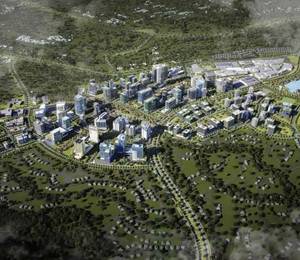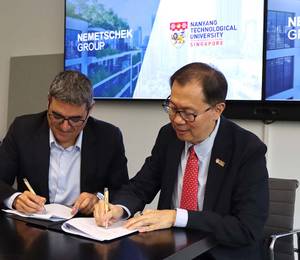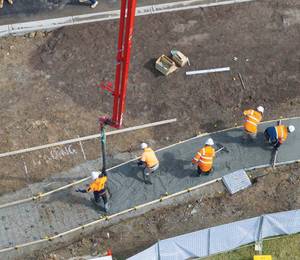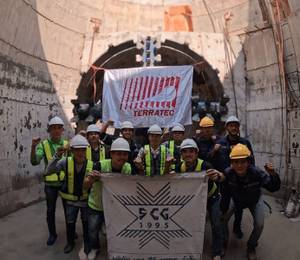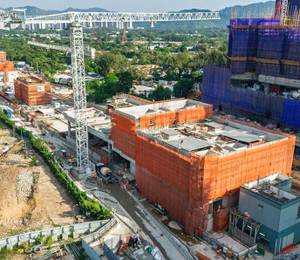On 8 May 2024 in Nepal’s Sindhuli District, a 6.4-m-diameter Robbins double shield tunnel boring machine (TBM) broke through at the Sunkoshi Marin Diversion Multipurpose Project (SMDMP) 11 months ahead of schedule.
At 13.3 km in length, this project is one of the longest TBM-driven tunnels through the Himalayan mountain range and is only the second such tunnel to be completed in the country.
Challenging geology
Ground conditions included two major fault zones with challenging and varied geology ranging from highly jointed mudstone, sandstone and conglomerate to quartzite, granite, and more. The tunnel was bored through mostly igneous rock with maximum overburden of 1,320 m.
“The overall design of the Robbins TBM is proven, and the equipment’s performance and integrity are excellent. Additionally, its adaptability to the Himalayan geological conditions is very impressive,” said Liu Fengfan, SMDMP project manager for contractor B-2/COVEC (China Overseas Engineering Group Co Ltd and China Railway No. 2 Engineering Group Co Ltd).
The TBM and its crew were able to persevere through multiple instances of the shield becoming trapped with bypass tunnels required to free it, including one instance 4 km into tunnelling that required 27 days’ worth of work to free the machine from collapsing and squeezing ground. Despite the challenges, the crew were able to more than make up the time with swift advance rates including 1,503.3 m in one month and 72.6 m in one day, both project records set in March 2024.
The success of the machine, despite adversity, is in part due to its design. The refurbished TBM was originally used at a smaller diameter on Nepal’s first TBM-driven tunnel, the Bheri Babai Diversion Multipurpose Project (BBDMP). The design incorporates many of the same components of that original machine, and the process involved final assembly on location at the jobsite.
“One of the highlights is that this machine integrates the overall structure of the 5.06-m-diameter TBM from the Bheri Babai project. After upgrading to 6.4 m diameter, all new front shield components were not assembled in the factory. Instead, we adopted Onsite First Time Assembly (OFTA). This was very effective, and I find it particularly noteworthy,” said Jin Haikuan, deputy project manager and TBM production manager for B-2/COVEC.
With tunnelling complete, the work of providing both power and water can begin. The tunnel is connected to a new 28.6-MW surface powerhouse on the Marin River to alleviate the shortage of power supply in the area. It will also be used for farmland irrigation in the districts of Dhanusha, Mahottari, Sarlahi, Rauthat and Bara in the Terai Plain, diverting water from the Sunkoshi River to the Marin River for the project owner, the Department of Water Resources and Irrigation under Nepal’s Ministry of Energy, Water Resources & Irrigation.
The project’s completion is a triumph not only for the communities benefiting, but also for the future of tunnelling in Nepal. “B-2/COVEC and Robbins have successfully introduced and spread TBM technology in Nepal and shown the advantages of it. This country needs more tunnels,” said Robbins president Lok Home at the breakthrough ceremony. “To have these good performances on these first two projects is really a good thing for the country and our industry.”



